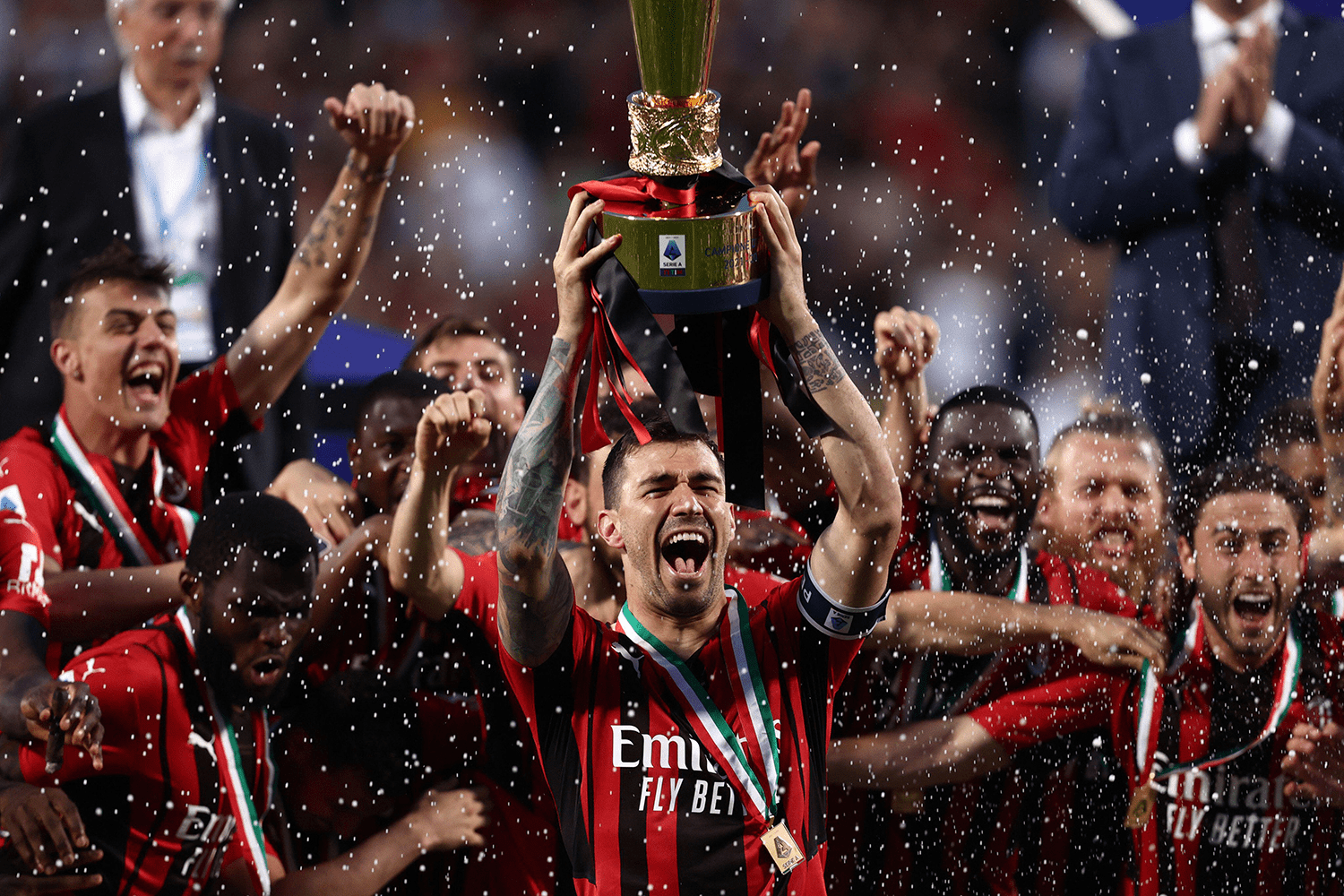The 2022/23 Serie A season kicks off on the 13th August. Let’s look at some of the teams, players, and narratives to watch in the new season of top-flight Italian football.
Expected Goal (xG) Performance, Serie A 2021/22
First, let’s analyse each team's performance compared to their expected goals (xG) difference in 2021/22.
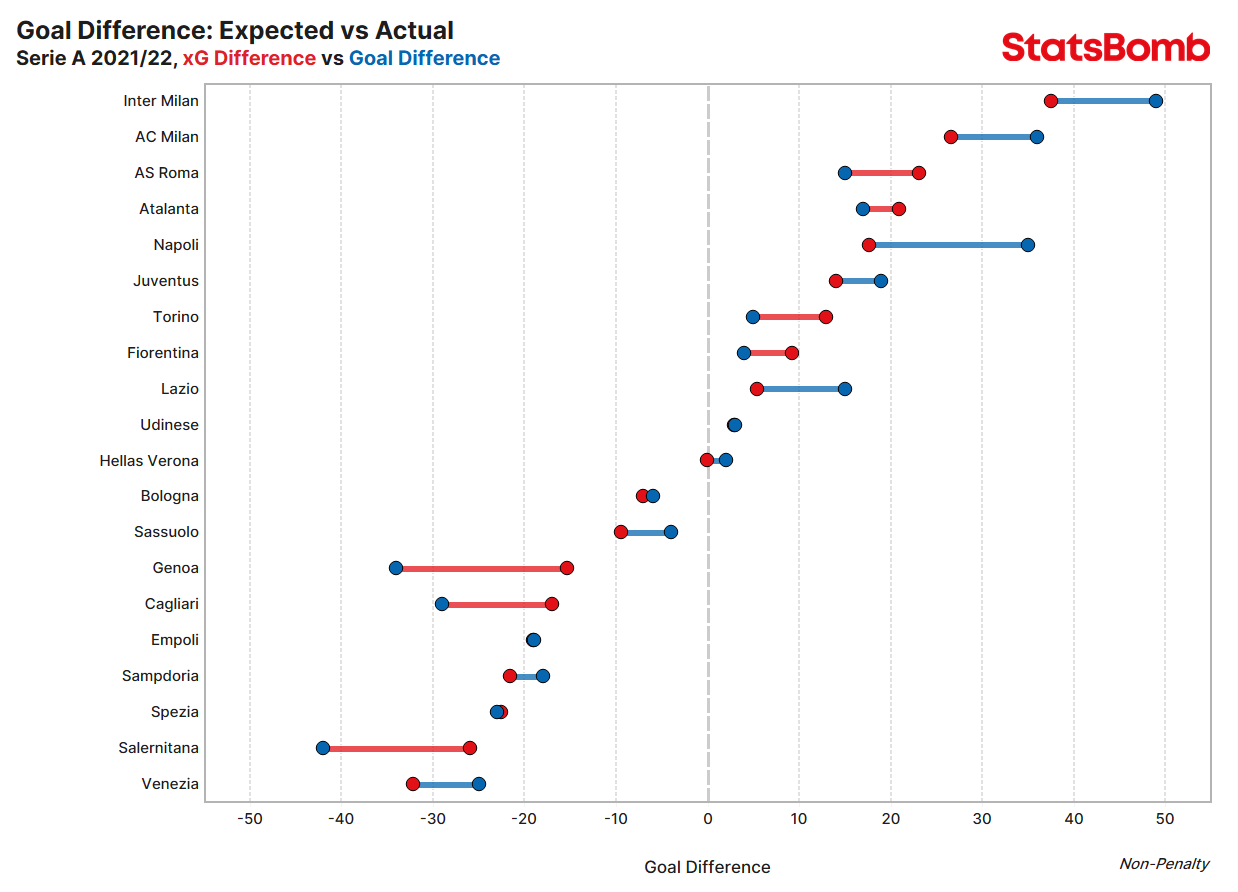
There are a few things we can take away here:
- 3rd-placed Napoli overperformed their expected goals by some margin – their actual goal difference was nearly twice that of their expected goal difference. Luciano Spalletti secured the return of Champions League football to Naples, but Napoli were aided heavily by penalties – scoring ten and conceding one. Taking those out of the equation, they might find a top-four finish more competitive in 2022/23.
- Roma and Atalanta could be their closest competition. Based on their expected goals, both teams were worthy of top four finishes, but neither could manage it, with Roma finishing in a Europa League qualifying spot and Atalanta finishing outside the European places altogether. Roma (+23.1 xGD) finished behind fierce rivals Lazio (+5.4 xGD) due to their profligacy at both ends of the pitch.
- Genoa and Cagliari can perhaps be more frustrated than Venezia that they ended up relegated. Genoa, in particular, underperformed their expected goals by 18 goals (-11 in attack, -7 in defence), one of the worst underperformances in the major European leagues.
Let’s take a closer look at the top of the table. Can we expect a repeat of last season’s title race?
Can AC Milan retain their title?
Years of planning and rebuilding bore fruit in May as Milan won their first Serie A title since the 2010/11 season, ending a drought that lasted more than a decade.
Their improvement has been consistent since they hired Stefano Pioli to succeed Marco Giampaolo in 2019. Last season’s title win was preceded by 6th (2019/20) and 2nd (2020/21) placed finishes, and there were signs in both of those campaigns that Milan could potentially be on the path back to the top of the Serie A tree.
They finished 2019/20 well and started 2020/21 equally strongly, but failed to put it together over a whole season in either campaign. But in 2021/22, they carried that performance level from start to finish.

“Attacks win you games, defences win you titles”, as the saying goes. It’s fair to say the adage applies here. Milan kept the best defence in Serie A, conceding just 31 goals in 38 games and keeping clean sheets in 18 of them.
Replacing academy graduate and goalkeeping stud Gianluigi Donnarumma was a difficult assignment, but they did so with minimal fuss by recruiting Mike Maignan from Lille as soon as contract negotiations with Donnarumma hit the point of no return. Maignan alone prevented 8.5 goals with his shot-stopping behind the Milan defence, and his performances cemented his reputation as one of the finest goalkeepers on the continent.
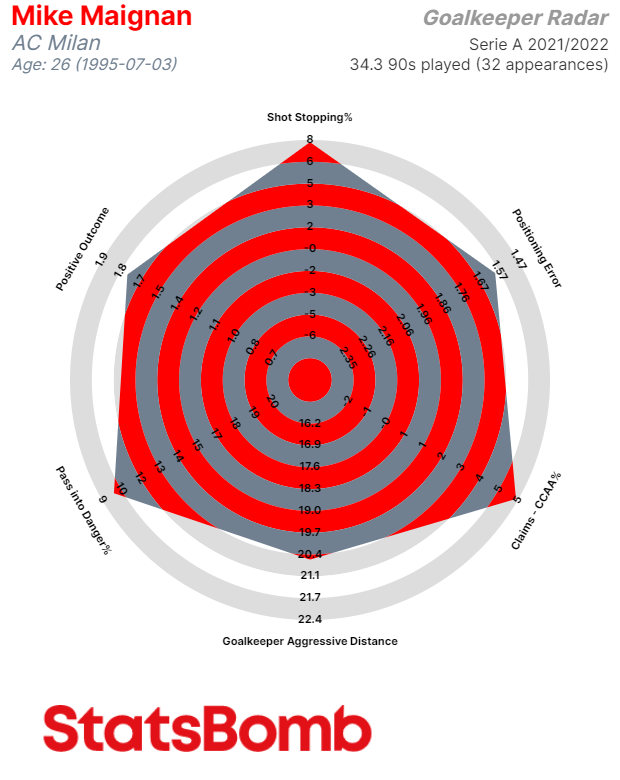
Up front, there was a true breakout season for Rafael Leão, who started to deliver on the potential he’d shown in previous seasons at Lille and Milan. Leão’s direct and powerful running was a consistent outlet for Milan: he registered more On-Ball Value (OBV) from dribbles and carries than any other player in Serie A last season. There was an end product to his game too, contributing 11 goals and eight assists to the Milan attack.

With only a little turnover in the squad, can I Rossoneri retain the title in 2022/23?
Can Inter regain the title?
Hot on Milan’s heels were 2020/21 champions Inter, who finished just two points behind their fierce rivals to lose out on the title.
But Inter finished the season with a much superior goal difference and expected goal difference, so what prevented them from retaining the title?
With the margins as tight as they were, a nine-game run between January and March in which Inter took just 11 points takes much of the blame, winning two games against bottom-four teams Venezia and Salernitana. Inter had won 14 of their 20 games prior to that, motoring along and finishing ahead of their xG (45 goals from 37.2 xG) and conceding fewer than expected (13 goals from 17.9 xG conceded).
And then, just at the wrong time, their finishing deserted them. Besides a 5-0 drubbing of Salernitana, Inter scored six goals in eight games and, crucially, lost a Milan derby to AC, losing the top spot in the game after the derby defeat and never recovering their position after that.
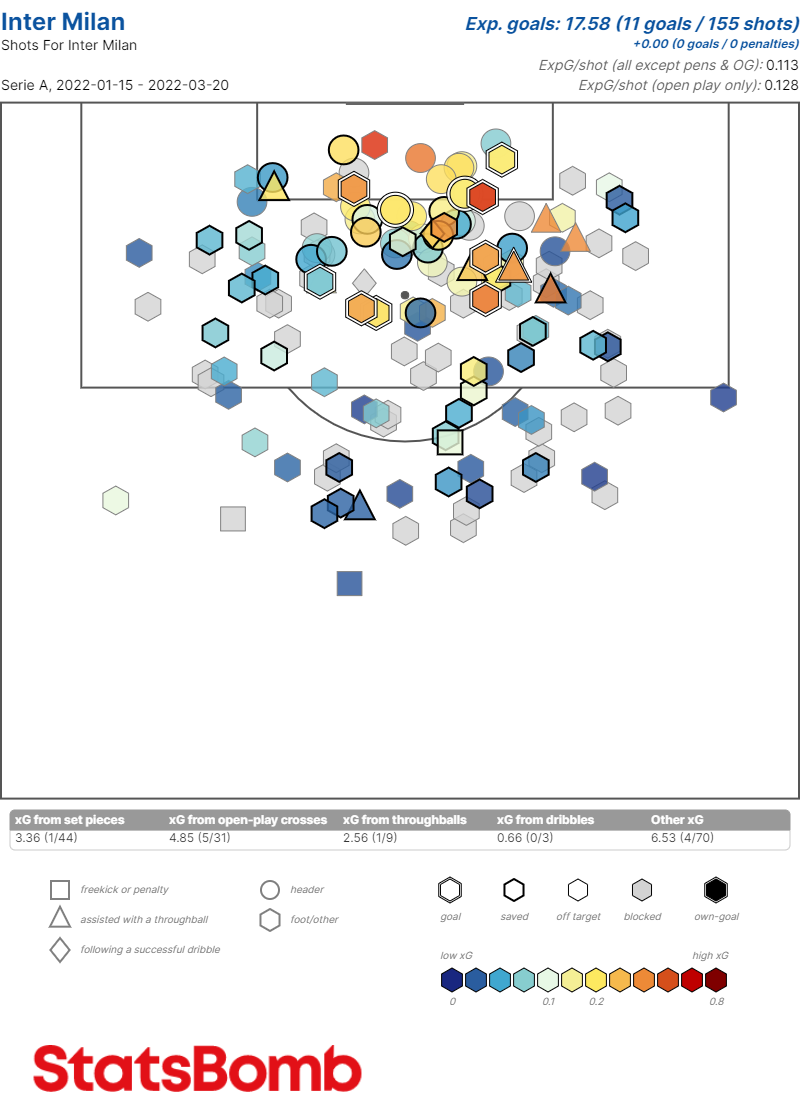
All that said, they were nearly perfect in the rest of the campaign and this summer have added to what was already the league’s best attack in 2021/22.
On-Ball Value: Where do Serie A teams create their threat on the pitch?
On-Ball Value (OBV) is our possession value model, a method of measuring the value of each action that took place on the pitch based on the positive or negative impact it had on a team’s likelihood of scoring (or conceding). This allows us to give credit to the most valuable actions in a possession chain – those that had the greatest impact on increasing a team’s chances of scoring – beyond the pass before the shot or the shot itself.
We can use OBV to assess where each team created the most value.
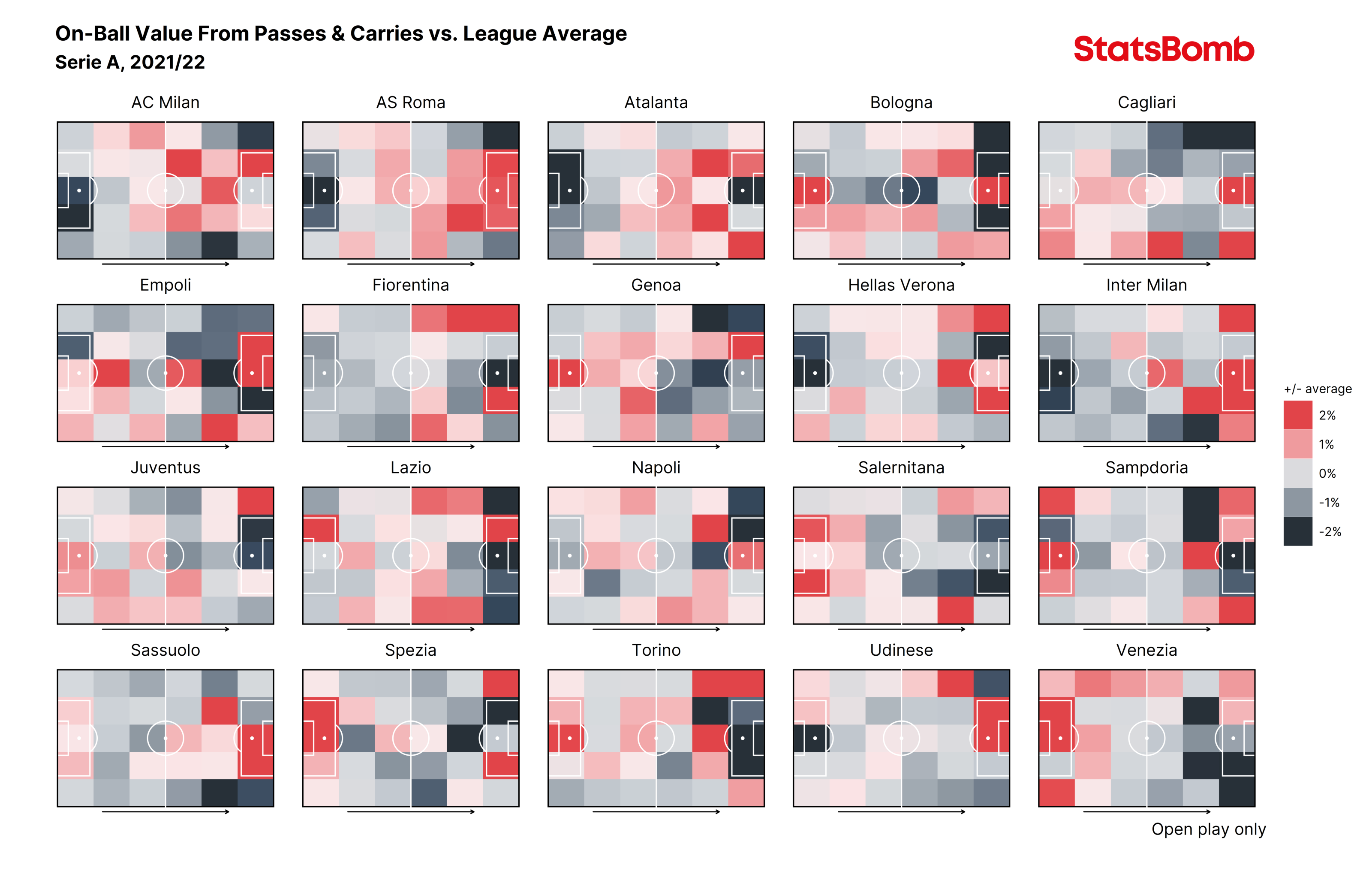
We can see:
- Juventus created a lot of their threat left flank crosses. Otherwise, their dangerous play came down the right but from deeper areas of the pitch – the Juan Cuadrado zone. Juve will be looking forward to the return of Federico Chiesa from a cruciate ligament injury to improve their threat down that flank and combine with January signing Dušan Vlahović.
- Lazio were effective in their play and created their threat from deeper areas, orchestrated by Sergej Milinković-Savić, Felipe Anderson and Luis Alberto. Once play advanced beyond the 18-yard line, it was down to Ciro Immobile to finish things off.
- Fiorentina’s ball progression came almost entirely down their left-hand side, led by Cristiano Biraghi, Riccardo Saponara and Nicolás González.
Can Atalanta return to the top four?
Last season was the first time Atalanta finished outside the European places under Gian Piero Gasperini. But, as we saw earlier in the piece, their performances were still that of a side worthy of qualifying for the Champions League.
Gasperini’s tactical approach has come in for praise not just for its efficacy but also for its entertainment, with Atalanta happy to take risks and commit bodies forward under his coaching. La Dea looked to overload the opposition defence and created more value from the half-spaces in the final third than any other side in Serie A. Their passes from these zones tend either to find an overlapping wing back - charging into a position to cut the ball back - or to be a slipped throughball to Duván Zapata, Mario Pašalić, or one of the central midfielders making a late run beyond the defensive line.
Despite limited minutes, playing 18.7 90s, Ruslan Malinovskiy was Atalanta’s biggest threat from these zones, creating more On-Ball Value with his passes in the half-spaces than any of his teammates, and landing a lot of his passes inside the penalty area.
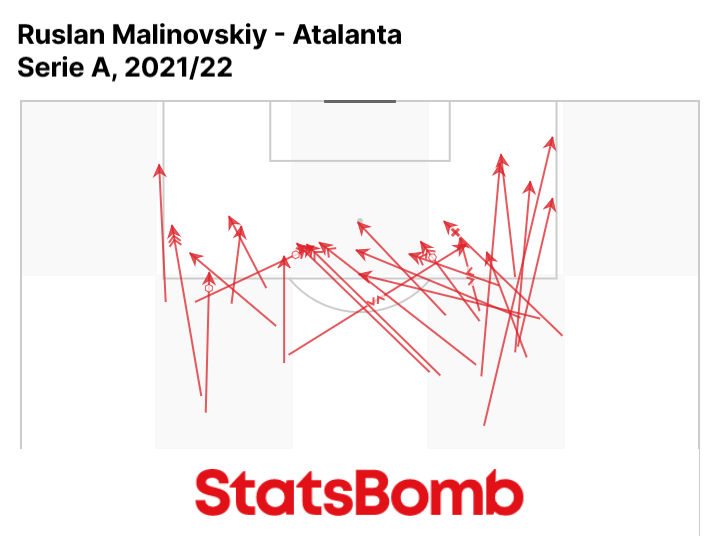
Where do Serie A teams press?
We’ve looked at some aspects of the league’s play in possession. But what were they doing without the ball in 2021/22?
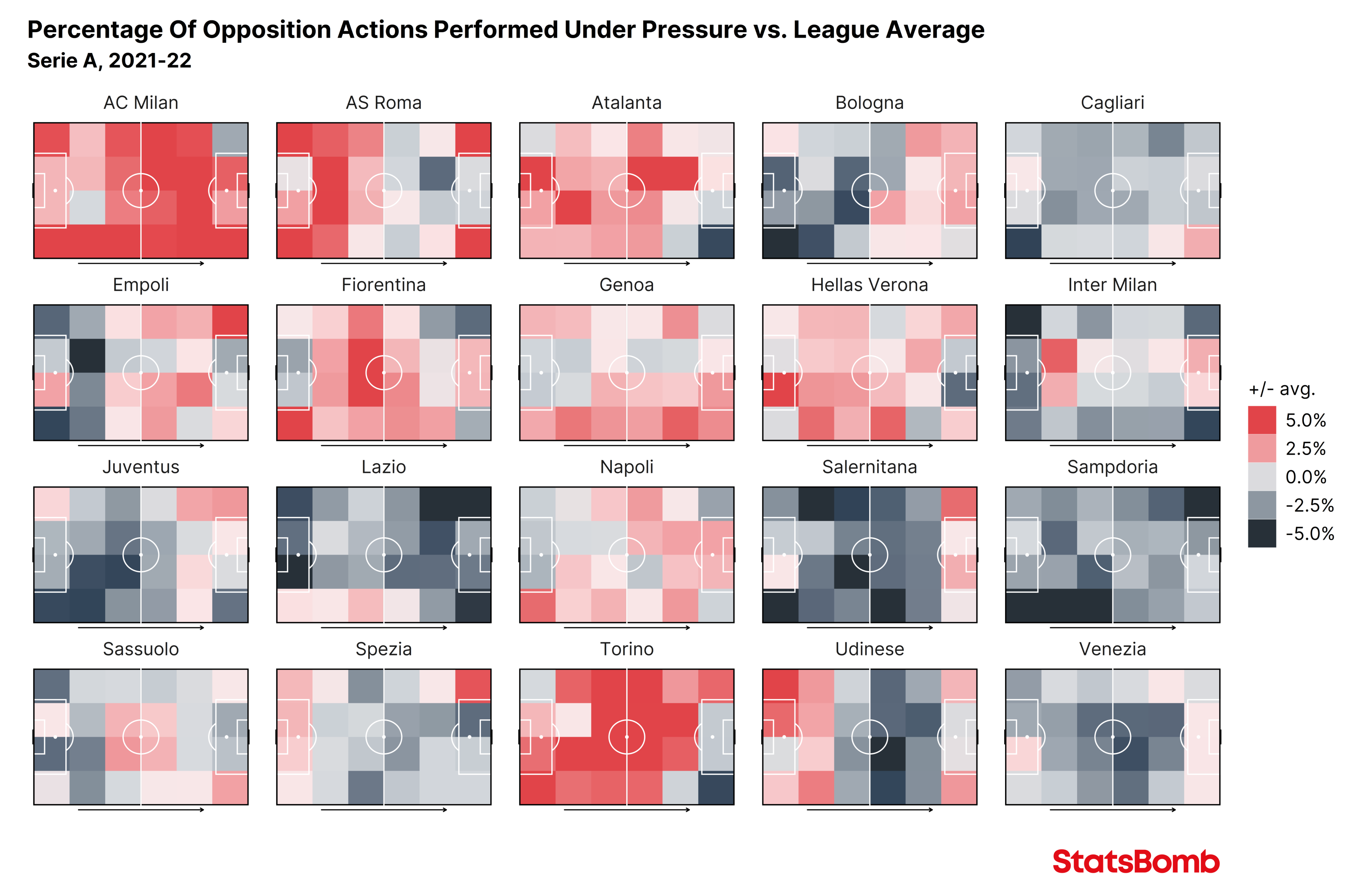
- Another aspect of Milan’s title win was their pressing and energy. They carried the most aggressive press in Serie A in 2021/22, with Sandro Tonali and Brahim Diaz providing most of the pressure in midfield and Fikayo Tomori happy to step out of the defensive line to engage the opposition. 26% of Milan’s opponent’s pass receipts were pressured, tackled or fouled by a Milan player within two seconds. It worked, too: Milan had the best defence in the league last season.
- José Mourinho’s familiar methods were evident in Rome. Roma stepped off their opponents as they looked to build out from the back, but they were much more aggressive as they started to invade Roma’s defensive territory.
- Torino only finished midtable but carried a very effective press under Ivan Jurić. They had the third-best defence by xG conceded and conceded the third-fewest shots, a fact that perhaps went a little bit under the radar outside of Italy.
Line-Breaking Passes In Serie A
What’s a StatsBomb season preview without having fun with our latest metric?
Using StatsBomb 360 data – freeze frame event data containing the location of all players in the frame around every event – we’re now able to identify when a pass has broken an opposition defensive line. Here are the top ten line-breaking passers in Serie A in 2021/22.
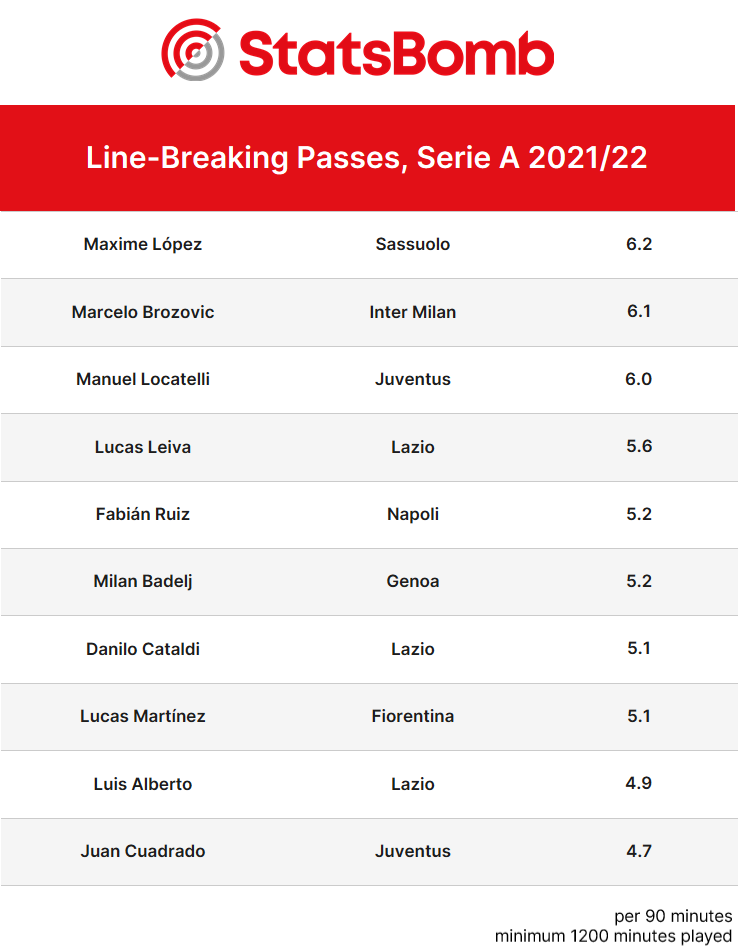
Key Transfers
Charles De Ketelaere – Club Brugge to AC Milan
Milan paid their biggest fee under the current ownership regime to secure Charles De Ketelaere from Club Brugge.
The Belgian can play across the attacking band, but it’s likely he’ll primarily be utilised to provide balance to Milan’s attack. A lot of their threat last season came through Rafael Leão on the left flank -- De Ketelaere can provide similar output from the right, if not playing next to or just behind the central striker.
De Ketelaere is a player who comes alive earlier in the build-up with his 1v1 ability and chance creation, but he’s also capable of finishing moves off as well. De Ketelaere managed 0.35 xG per 90 in the Jupiler Pro League last season despite just 2% of his touches being shots.
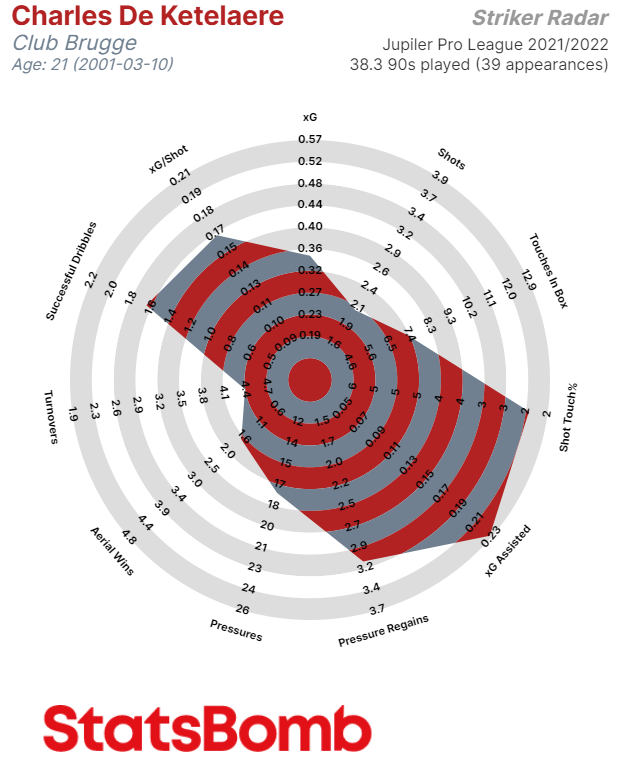
Romelu Lukaku – Chelsea to Inter Milan
It was only two seasons ago that Romelu Lukaku netted 18 non-penalty goals and ten assists for Inter in a title-winning season. He’s back 12 months after his departure to reignite his partnership with Lautaro Martínez, albeit under Simone Inzaghi this time around. Though it didn’t work out at Chelsea, Lukaku is as proven as they come in Serie A and will slot into a side that already had the best attack in Serie A last season.
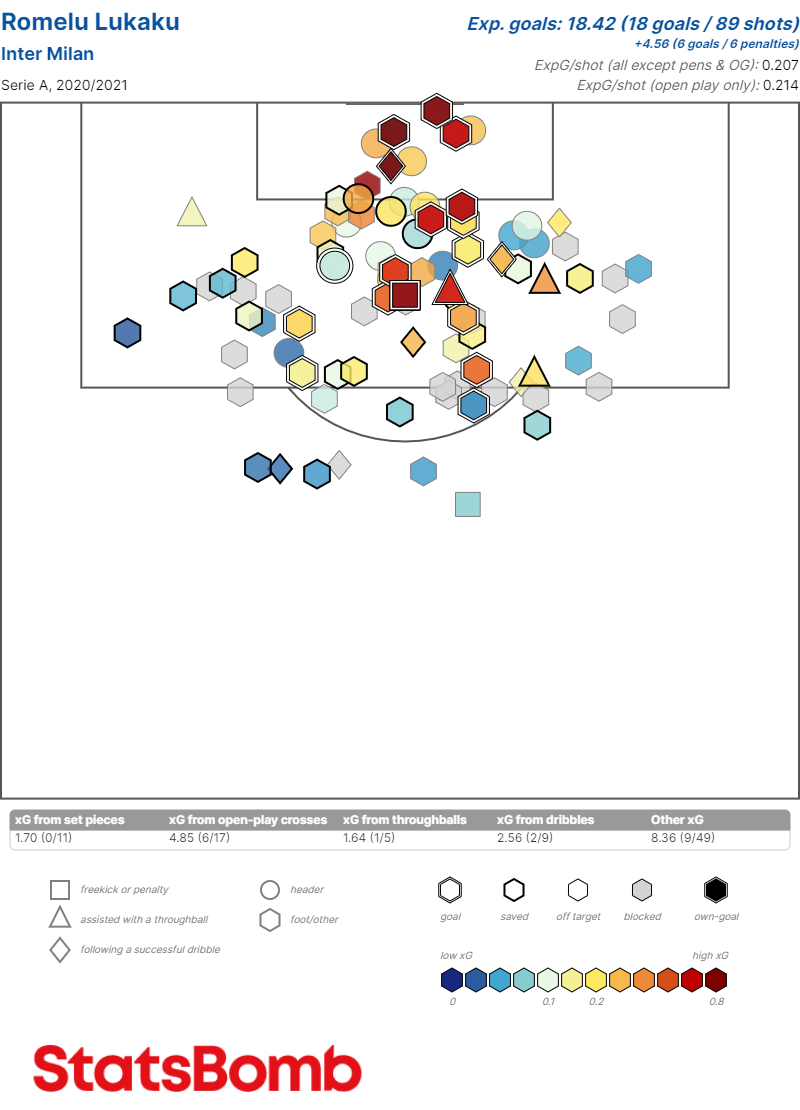
Paul Pogba – Manchester United to Juventus
Like Lukaku, Pogba is another player returning to his old Serie A club after finding less success in the Premier League.
Pogba’s talent has come under more and more doubt over the course of his time at Manchester United, as he and his team consistently performed below expectations. Despite poor performances at club level, Pogba still managed some impressive performances on the international stage for France in the same period and will add a creative x-factor that was missing from Juventus’ midfield in 2021/22 under Massimiliano Allegri.
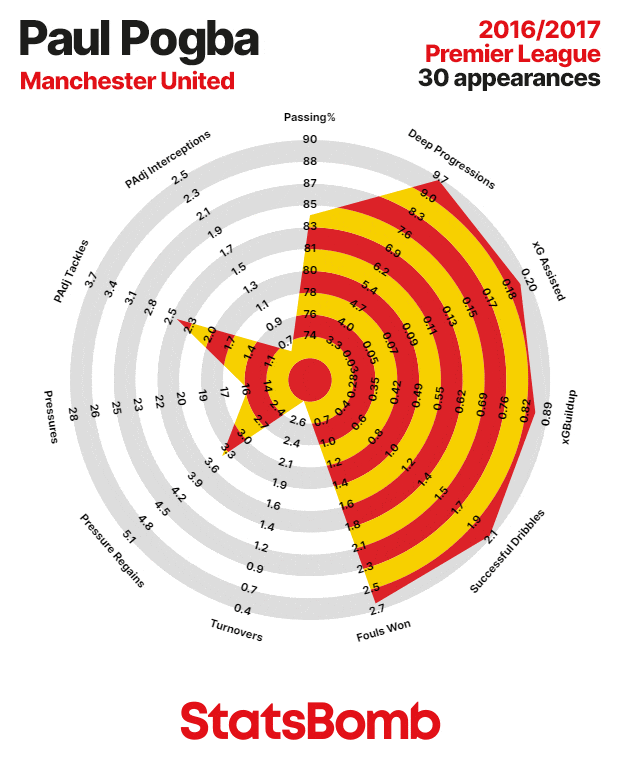
There’ll be plenty to keep an eye on in Serie A in 2022/23. Thankfully, we don’t have to wait much longer.
